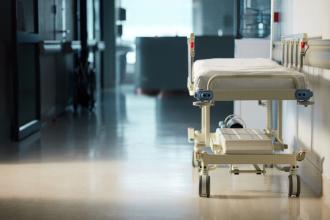Post-acute-COVID-19 Visiting Specialist Clinic
As an additional support for workers referred to post-COVID-19 recovery clinics in the community, the WorkSafeBC Visiting Specialist Clinic (VSC), in collaboration with Claims and Rehabilitation Services and Medical Services, has established a worker-centred post-acute-COVID-19 clinic to provide workers with the support they need more quickly.
The goals of the clinic are to:
- Initiate early referrals for workers with persistent symptoms to be seen within 6 to 12 weeks of the onset of illness.
- Provide a setting for injured workers with prolonged symptoms related to COVID-19 to be assessed in person (in the context of a pandemic) at the Richmond VSC, although workers can also be seen virtually.
- Provide education to help workers manage their symptoms and initiate discussion on functional and vocational recovery.
- Provide objective information for guidance and decision making for the case management team to support workers in their clinical and vocational recovery.
The clinics are staffed by general internal-medicine specialists who also provide services at community post-COVID-19 recovery clinics. The VSC ran its first post-acute-COVID-19 clinic in April 2021. In the clinic’s first 10 months, 132 workers received initial consults.
The clinic visit
A visit to the clinic starts with a comprehensive history and physical exam by a general internal-medicine specialist. The specialist will identify any pre-existing comorbidities that may be contributing to delayed recovery. Following the assessment, the specialist may refer the worker for further investigation, such as spirometry, chest CT, echocardiogram, or Holter monitoring, all of which can be expedited in the Lower Mainland using WorkSafeBC’s network of contracted providers. The specialist may also refer the worker to a subspecialty, such as respirology, cardiology, psychiatry, or neurology, or connect the worker with rehabilitation services and other programs to support their recovery.
After the initial assessment, a WorkSafeBC occupational therapy clinical advisor assesses the worker, reviewing job tasks, return-to-work status and barriers, activities of daily living, and daily routines. The worker is provided with education on energy conservation, sleep hygiene, brain fog, post-exertional malaise, and headache management. Workers are also introduced to the three Ps of managing daily activities: pace, plan, and prioritize. The occupational therapist supports the worker in setting goals for return to baseline functioning and recommends community rehabilitation treatment with a focus on future gradual return-to-work planning. Following this visit, workers are connected to other community-based programs, such as occupational therapy and interdisciplinary rehabilitation programs, which include mental health support. These programs provide supportive care and help workers manage their symptoms and work toward their treatment goals, including return to work.
Referral process
Workers can be referred to the VSC post-acute-COVID-19 clinic in a number of ways:
- Workers are identified by case management staff and medical advisors, in consultation with community/family physicians or nurse practitioners, and are then referred to the clinic.
- Community physicians who think a referral would be beneficial for a patient can contact the claim owner, call the RACE Line (604 696-2131 or 1 877 696-2131 toll-free), or indicate on a Form 11 that they would like to speak to a medical advisor to discuss referral to the clinic. Community physicians cannot refer a patient directly.
In either case, if you request or agree to referral to the clinic, the medical advisor will write the referral on your behalf, and you will receive a copy of the referral letter and consultation reports from the clinic specialists. You can also contact Occupational Disease Services at 604 231-8842 with questions about the referral process.
—Michelle Tan, MD, CCFP, MBA
Medical Consultant, Health Care Programs, WorkSafeBC
hidden
This article is the opinion of WorkSafeBC and has not been peer reviewed by the BCMJ Editorial Board.

